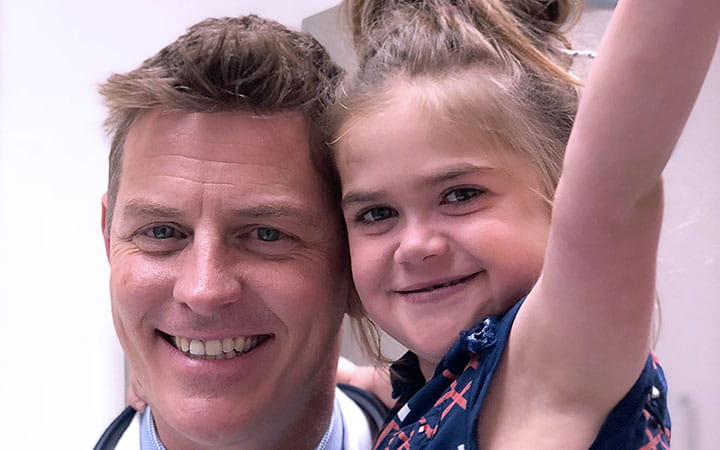Girl With 10 Percent Chance To Survive Celebrates 10th Birthday
August 19, 2021
 University Hospitals Rainbow Babies & Children'sExperts in Children's Health
University Hospitals Rainbow Babies & Children'sExperts in Children's Health

Born five weeks early, Mia Wilson was diagnosed with a rare heart condition called Ebstein Anomaly, which gave her a 10 percent survival rate. During her first year of life, Mia suffered several strokes and cardiac arrests requiring many surgeries and procedures.
Thanks to her care team led by Martin Bocks, MD at UH Rainbow, Mia has accomplished many milestones and is a strong, happy girl today.
This year, Mia’s big milestone is her 10th birthday. In celebration, Mia and her family are raising funds to support Dr. Bocks’ research to develop medical devices for patients with congenital heart disease, one of which is a bioresorbable device to close holes in the heart without needing surgery.
Atrial septal defects are one of the most common diagnosed congenital heart diseases affecting patients. Because the current devices used in closing atrial septal defects have some short-term and long-term limitations, Dr. Bocks says he expects his novel device will provide distinct advantages over the available devices. The prototype is in development, and will undergo extensive testing before going to the U.S. Food and Drug Administration for approval.
“What is most exciting about this device is its ability to completely disappear from the heart after the patient’s own heart cells have overgrown the device over the appropriate period of time,” Dr. Bocks says.
Dr. Bocks says he also is excited about the potential to 3D print these devices in shapes and sizes specific to the patient’s heart dimensions.
“This would be the first customizable cardiac device, which really is and should be the future of medical implants as opposed to the one-size-fits-all approach we have used for years for growing children," he says. "We have much more work to be done to bring this device to market, but I am looking forward to the day we can offer new devices to some of our highest-risk congenital heart disease patients like Mia.”
Tags: Congenital Heart Defects


